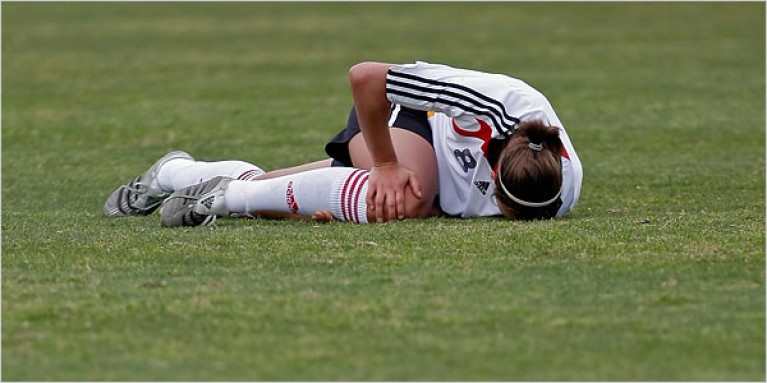Female soccer players are – and have always been – at a high risk of sustaining injuries, especially during their teenage years.
Numerous causal factors for this high injury risk have been described and documented in scientific literature, among them the anatomical changes that occur in females’ bodies post-puberty, such as a widening of the pelvis and corresponding adduction and internal rotation of the knees.
There is one other factor, however which – based on current scientific research – has been shown to contribute to increased risk of injuries in female athletes – including soccer players – yet most soccer coaches, even at the highest levels of the sport, are not as knowledgeable about it as they should be.
The factor in question is the increased risk of injury associated with the physiological changes which occur in females’ bodies during their menstrual cycle.
How exactly does the menstrual cycle lead to increased risk of injuries in female athletes? To understand and answer this question, a basic understanding of the physiology of the cycle is required.
There are 3 main phases of the menstrual cycle:
1. The follicular phase (days 1 to 9): The body starts to release the hormones estrogen (which thickens the lining of the uterus to prepare for a fertilized egg), and follicle-stimulating hormone or ‘FSH’ (to stimulate follicles to grow).
2. The ovulatory phase (days 10-14): Peak estrogen levels are reached during the initial days of this phase. A surge in estrogen triggers the release of a 3rd hormone, luteinizing hormone (LH), which causes one follicle to rupture and release a mature egg.
3. The luteal phase (day 15 to the end of the cycle): The empty follicle turns into a corpus luteum. The cells of the corpus luteum produce estrogen and large amounts of progesterone. Progesterone stimulates your uterine lining to prepare for a fertilized egg.
While estrogen plays a vital role in the creation of life, it can have a significant detrimental effect on performance in sports, including soccer. This is because estrogen can decrease the activity of fibroblasts – cellular organisms which function to produce collagen, which is a protein that forms the structural framework of human tissue, including connective tissues like tendons and ligaments.
Why is this bad for athletic performance?
Well, besides the fact that the strength of certain tendons and ligaments, such as the achilles tendon in the ankle or the anterior cruciate ligament (ACL) in the knee, is essential for the optimal performance of athletic skills, a lack of collagen has also been associated with delayed proprioceptive responsiveness of these structures, making them less pliable and more prone to straining and tearing.
In short, higher production of estrogen means less strong, and less pliable, tendons and ligaments – and less strong/less pliable tendons and ligaments can decease sports performance and raise injury risk.
In the past 30 years, several studies (Nielsen & Hammar, 1984, Wojtys et al., 1998, Slauterbeck et al., 2002, Beynnon et al., 2006) have identified a link between the specific phase of female athletes’ menstrual cycle and increased injury rates, including injuries to the ACL.
In each study, the highest rate of injury was found to be during the end of the follicular phase and/or the beginning of the ovulatory phase – during which the body’s estrogen levels reach their peak.
So what does this all mean for coaches of female soccer players?
First, coaches need to be aware of the menstruation cycles of the athletes with whom they work, including keeping an open line of communication with both the athletes themselves and their parents or legal guardians if applicable.
Second, coaches should consider decreasing the training load, and avoiding specific types of exercises – such as small-sided games, or pivoting/cutting drills – that have frequent high-speed changes of direction, during the late follicular and early ovulatory phases of their athletes’ training programs.
Third and finally, a comprehensive preventive training routine, such as the FIFA 11+ Injury Prevention Program, can be used with female players to help attenuate the problems caused by increased estrogen levels during menstruation, namely, weakening of the tendons and ligaments and delayed neuromuscular responsiveness.
While it may not be possible for all coaches of female players to plan and tailor the load of all training to the stage of each individual athlete’s menstrual cycle, keeping open and honest communication with athletes and their parents and legal guardians, and being as knowledgeable as possible about the risks of injury associated with each phase of the menstrual cycle, is a critical starting point.
By not overlooking the role the menstrual cycle plays in athletic performance and injury risk, coaches can take the steps necessary to reduce the incidence of injury, while at the same time optimizing the physical performance, of their players.
I’d love to hear your thoughts about this topic. Drop me a line here to get the conversation started.




